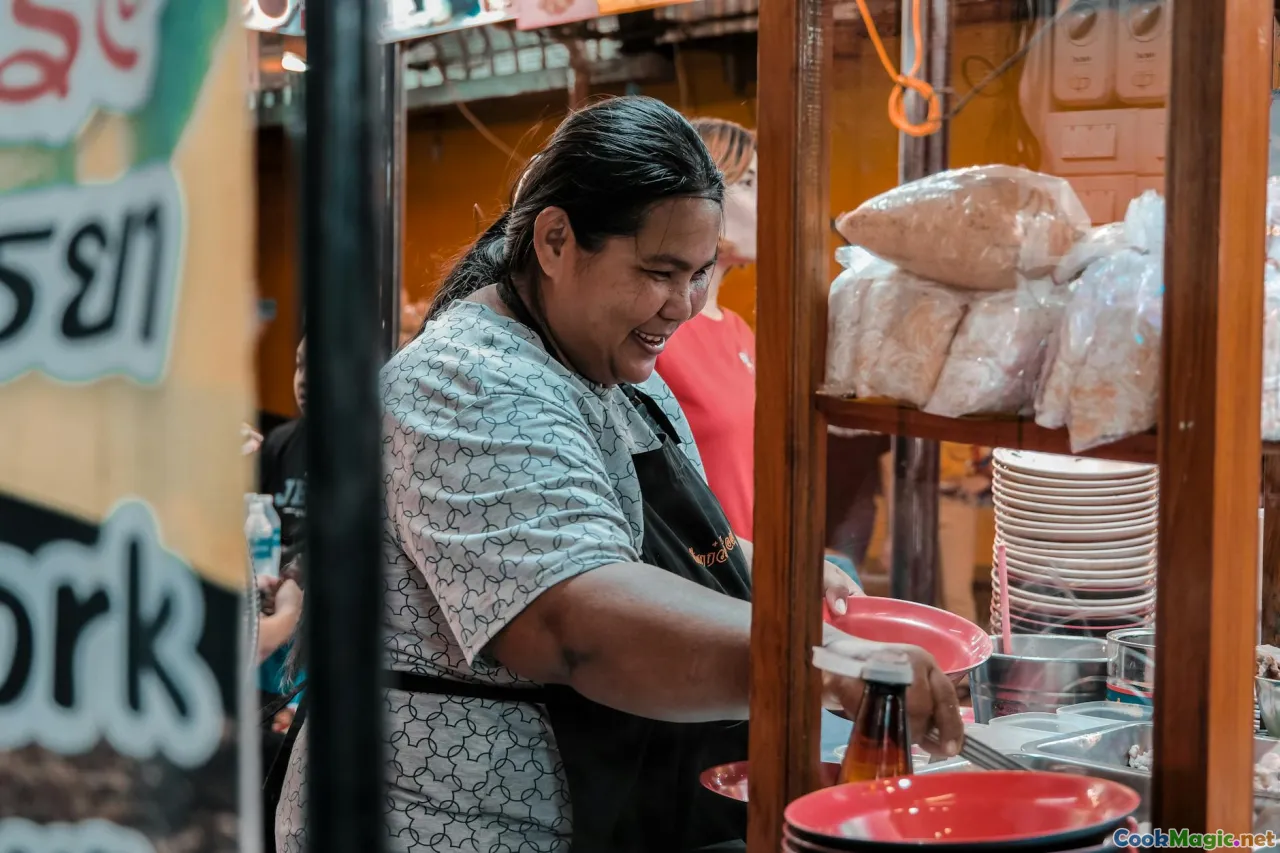Why Thai Street Food Differs by Region
8 min read Discover how Thailand's vibrant street food scene varies across regions, shaped by culture, history, and geography, creating a tapestry of flavors. April 20, 2025 12:55
Why Thai Street Food Differs by Region
Imagine walking through a bustling street market in Bangkok, the air thick with the aroma of spicy soups and grilled meats, only to turn a corner in Chiang Mai and be greeted by fragrant herbal salads and sticky rice desserts. Now picture the vibrant stalls in Phuket offering fresh seafood grilled to perfection, contrasting sharply with the hearty, warming dishes of Isan in northeastern Thailand. This kaleidoscope of flavors, textures, and aromas isn’t just a coincidence—it's a reflection of Thailand’s rich regional diversity.
An Introduction: The Flavorful Tapestry of Thailand
Thai street food is celebrated worldwide for its bold flavors, vibrant colors, and the infectious energy of its vendors. But beyond the universally loved Pad Thai or Tom Yum, lies an intricate mosaic of regional cuisines that tell stories of history, geography, climate, and culture. Each corner of Thailand offers a unique culinary experience, shaped by centuries of trade, migration, and local resources.
The Cultural and Historical Foundations of Regional Differences
Northern Thailand: The Mountain Kingdom
Nestled among lush hills and ancient temples, Northern Thailand’s cuisine is characterized by its aromatic herbs, sticky rice, and hearty stews. The influence of neighboring Myanmar, Laos, and China is evident here. Dishes like Khao Soi—a fragrant coconut curry noodle soup with crispy egg noodles—are emblematic of this region’s blend of flavors. Vendors often use locally grown herbs like lemongrass, galangal, and kaffir lime leaves, which lend a distinctive aroma and depth.
Central Thailand: The Heartland
The central plains, including Bangkok, are the political and economic hub, and their cuisine reflects a melting pot of influences. Here, street food is as much about convenience as it is about refined flavors. Dishes such as Som Tum(papaya salad) andPad Thai showcase a balance of sweet, sour, salty, and spicy notes. The abundance of rice paddies and access to diverse ingredients means staples like jasmine rice and fresh vegetables are central. The influence of Chinese, Indian, and Malay traders over centuries has also enriched the culinary landscape.
Northeastern Thailand (Isan): The Spicy Frontier
Isan cuisine is renowned for its boldness—fermented fish, chili, and lime are staples. The region’s history as a less developed, rural area has fostered a cuisine that is straightforward, hearty, and intensely flavorful. Sticky riceis a dietary staple, often served with grilled meats likeMoo Ping(marinated pork skewers) and spicy salads such asLarb. The use of fermented fish (Pla Ra) gives dishes a pungent aroma that is loved by locals but might surprise first-time visitors.
Southern Thailand: The Coastal Flavor
The southern coast, with its access to the Andaman Sea and the Gulf of Thailand, boasts a cuisine heavily influenced by Malay, Indonesian, and Indian flavors. Coconut milk, turmeric, and fresh seafood dominate. Dishes like Massaman CurryandKhao Yum (a spicy rice salad) are characterized by their rich, spicy, and fragrant profiles. Street stalls often feature grilled seafood, crab cakes, and tropical fruits—offering a bounty of oceanic flavors.
Geography and Climate: The Natural Drivers of Diversity
Thailand’s diverse landscapes directly influence its culinary variations. The cooler, mountainous north fosters a climate suitable for herbs and root vegetables, while the humid south supports abundant seafood and tropical fruits. The fertile central plains are perfect for rice cultivation, making rice-based dishes ubiquitous. This geographical diversity creates unique ecosystems that local vendors harness to produce ingredients that are specific to their region.
Cultural Influences and Trade Routes
Throughout history, Thailand has been a crossroads of civilization. Ancient trade routes connected it to China, India, the Malay Archipelago, and beyond. These exchanges introduced new spices, cooking techniques, and ingredients that blended seamlessly into regional cuisines. For example, Muslim communities in the south contributed to the popularity of curries and sauces based on coconut and spices, adding another layer to the regional flavor spectrum.
Personal Reflections and Culinary Experiences
Having traveled extensively across Thailand, I’ve tasted the subtle differences that make each region’s street food extraordinary. In Chiang Mai, I was captivated by the earthy aroma of Khao Kha Moo—braised pork leg served over sticky rice—slowly simmered with star anise and cinnamon. In Bangkok, I delighted in the tangy, crunchy Som Tum and the quick-witted street vendors expertly tossing papaya salad with lime juice, chili, and fish sauce.
In Phuket, the scent of grilled seafood mixed with the salty breeze created an intoxicating sensory experience, while in Isan, the intense heat of chili and fermented fish made me appreciate the region’s fiery resilience.
The Social Role of Street Food in Regional Identity
Street food isn’t just about sustenance; it’s a vital part of regional identity and community bonding. Vendors are custodians of culinary traditions, passing recipes down through generations. Markets serve as communal spaces where stories are shared over steaming bowls and skewers. Each bite is infused with local pride, history, and a sense of belonging.
Conclusion: A Culinary Journey Through Diversity
Thailand’s street food scene is a living testament to its diverse landscapes, histories, and cultures. From the aromatic, herb-laden dishes of the North to the fiery, fermented flavors of Isan, and the rich, coconut-infused curries of the South, each region offers a distinctive culinary identity. Exploring these differences isn’t just about tasting new dishes—it’s about understanding a nation’s soul, shaped by its geography, history, and people.
So next time you wander through Thai streets or order a dish, remember: every flavor, every spice, and every ingredient tells a story of a region’s unique journey through time. Embrace the diversity, and let your palate be your guide to Thailand’s vibrant culinary mosaic.









